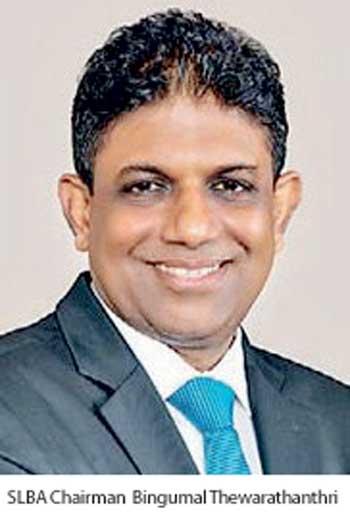Reply To:
Name - Reply Comment
 By Shabiya Ali Ahlam
By Shabiya Ali Ahlam
Sri Lanka’s banking sector yesterday welcomed the move by the Central Bank to relax the restrictions imposed on Standing Facilities to Licensed Commercial Banks (LCBs) under Open Market Operations (OMOs) as it will help improve liquidity.
Sri Lanka Banks’ Association (SLBA) Chairman Bingumal Thewarathanthri noted that the decision by the Monetary Board will ultimately lead to lower borrowing costs to clients.
“Today’s (yesterday’s) relaxation of these restrictions will support further to improve the liquidity in the interbank call money market as well as the government securities market as this will enable the banks to borrow from CBSL without any restrictions, in case a need arises,” Thewarathanthri told Mirror Business.
In January 2023, the financial sector regulator, the Central Bank, imposed a regulation restricting banks from accessing the Standing Facilities. Access to the Standing Deposit Facility (SDF) was limited to a maximum of five (05) times per calendar month, while the amount that can be borrowed from the Standing Lending Facility (SLF) was capped at 90 percent of the Statutory Reserve Requirement (SRR) of a particular bank, at any given day.
The CBSL justified its move back then by stating the measures were imposed to reduce the over-dependence of banks on the overnight facilities offered by the Central Bank, supporting the reactivation of the domestic interbank money market, particularly the call money market.
Providing an insight, Thewarathanthri shared that towards the latter part of last year, the market witnessed an increase in activities in the domestic money market with more banks participating by lending to each other in the overnight call money market.
Further, activities in the government securities market too picked up post the successful completion of the Domestic Debt Optimisation (DDO) with several banks getting back to the market, who were otherwise not active for an extended period.
“This helped the government securities yields to ease significantly in line with the monetary policy easing effected by CBSL,” he said.
‘‘Relaxation of these restrictions will support further to improve the liquidity in the interbank call money market as well as the government securities market”
In a statement to the media yesterday, the Central Bank said the measures it took have yielded positive outcomes and helped curtail excessive competition for deposit mobilisation among financial institutions. “These measures were also instrumental in inducing a moderation in the market interest rate structure in line with the monetary policy stance while preserving the stability of financial institutions and the financial system,” it said.
CB lifts restrictions on LCBs under OMOs
The Monetary Board this week decided to relax the restrictions imposed on the Standing Facilities of Licensed Commercial Banks (LCBs) under Open Market Operations (OMOs).
With effect from the reserve maintenance period commencing 16 February 2024, the restriction on the Standing Lending Facility (SLF) will be removed and the restriction on Standing Deposit Facility (SDF) will be relaxed from five times (05) to ten times (10) during a calendar month.
The decision was taken at a special Monetary Board meet ing held on Wednesday (7), after carefully reviewing the developments in the domestic money market, as well as the behaviour of LCBs in terms of market participation along with the improvements in liquidity, the Central Bank said. The relaxation of the restrictions on Standing Facilities is expected to accelerate the downward adjustments in market interest rates as envisaged under the overall monetary policy direction of the Central Bank.